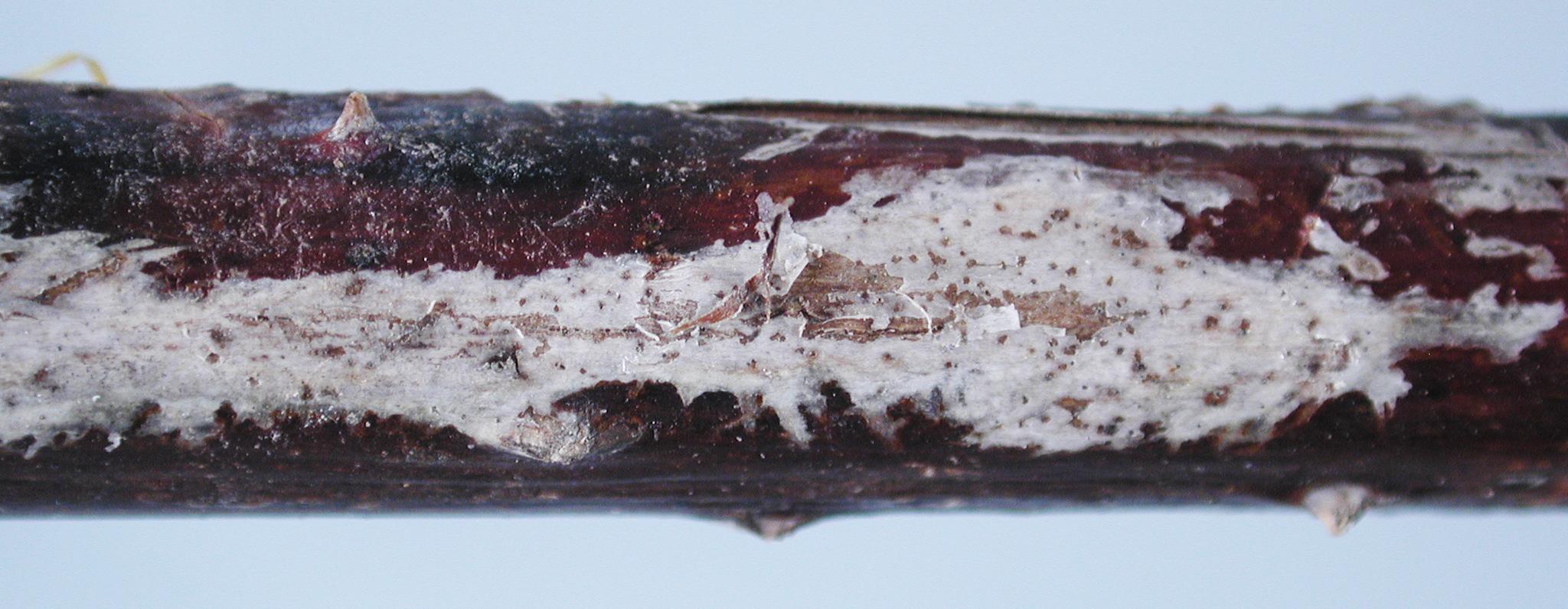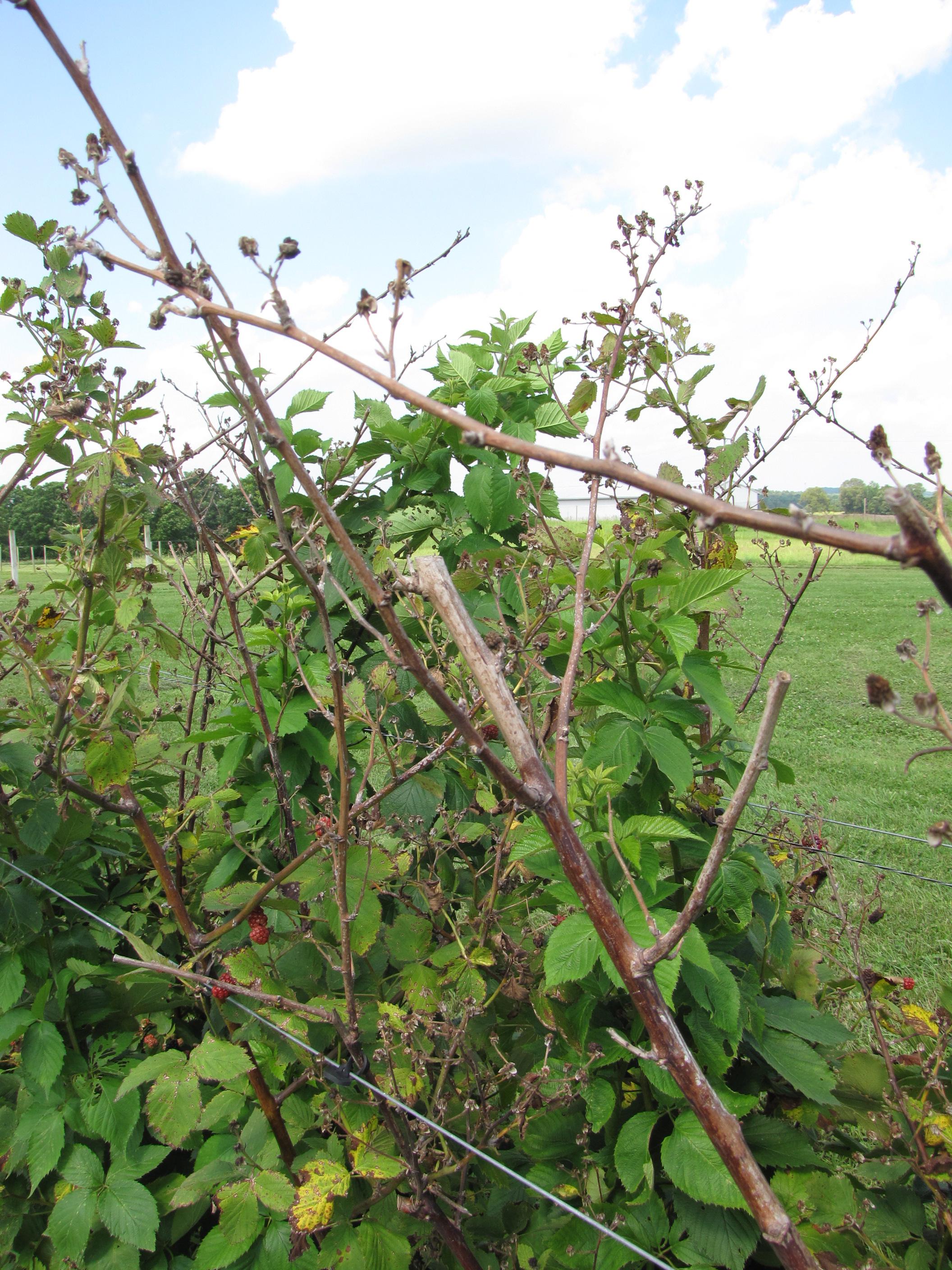Cane Blight of Brambles
Return to Diseases
Cane blight (Leptosphaeria coniothyrium) is a widespread fungal disease of raspberry, occasionally occurring on blackberry. Darkcolored cankers develop on primocanes near the end of the growing season. Cankers enlarge, spread downward, and girdle canes; lateral shoots eventually die, most noticeably between flowering and fruit ripening. Fungal fruiting bodies are often visible as black specks in centers of cankers. During the second year, infected canes and branches near cankers may suddenly wilt and die. Cankers cause cane cracking and breakage. The fungus overwinters in infected and dead canes. Primocanes that are wounded from cracks, pruning cuts, or insect punctures are susceptible to infection in spring.

Cane blight lesion.
(Photo: John Strang, University of Kentucky)

Close-up of lesion with fungal fruiting bodies evident as black specks.
(Photo: OSU Plant Clinic, Oregon State University)

Dieback resulting from cane blight.
(Photo: Daniel Becker, University of Kentucky)
Management:
- Practice proper sanitation (remove floricanes after harvest; remove all diseased canes; destroy prunings or discard away from plantings).
- Increase air circulation to encourage drying of plant tissues (pruning, thinning, spacing, and managing weeds).
- Avoid unnecessary wounding by mechanical injury or damage by insects; pruning cuts should be sharp and clean.
- Apply fungicides (including dormant application).
